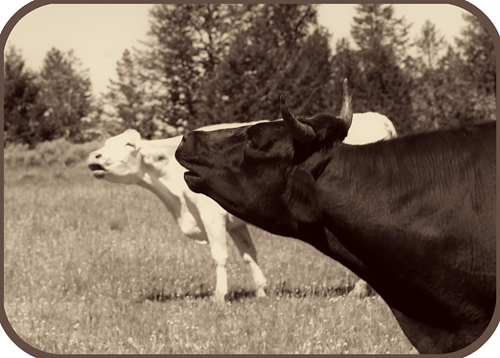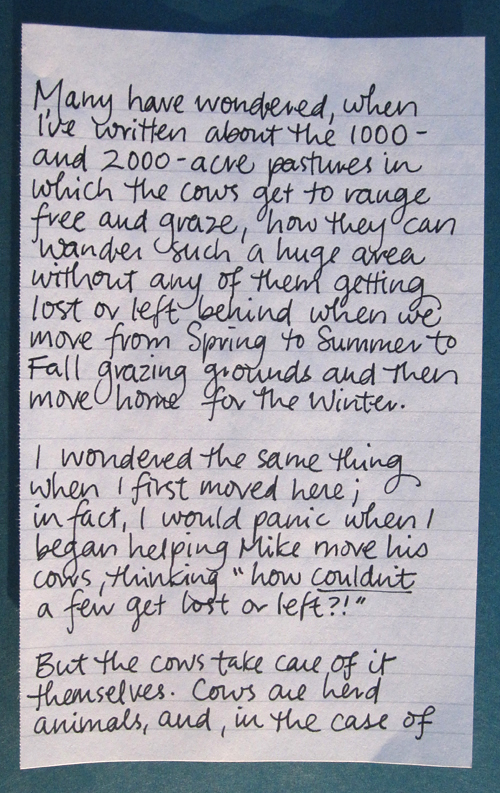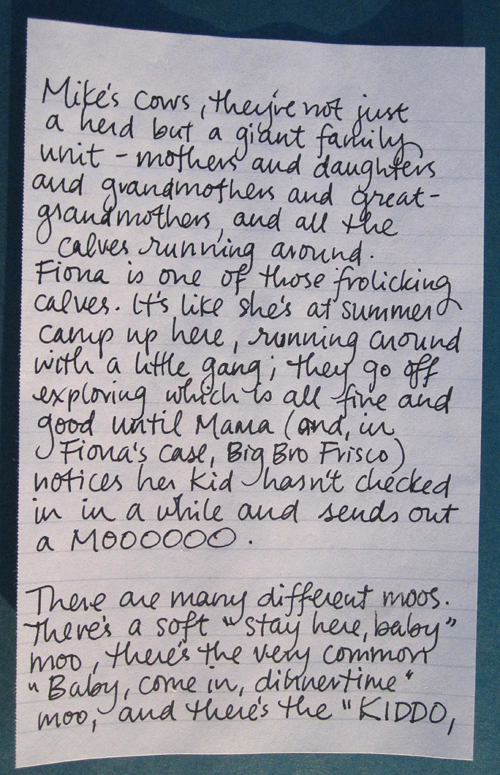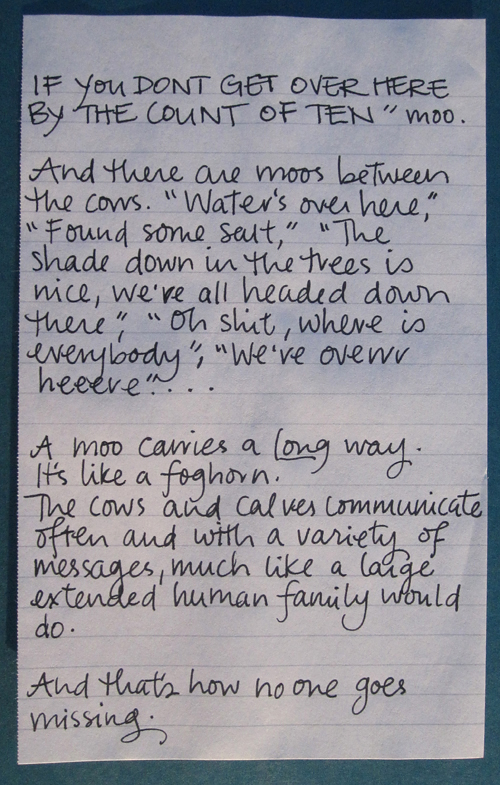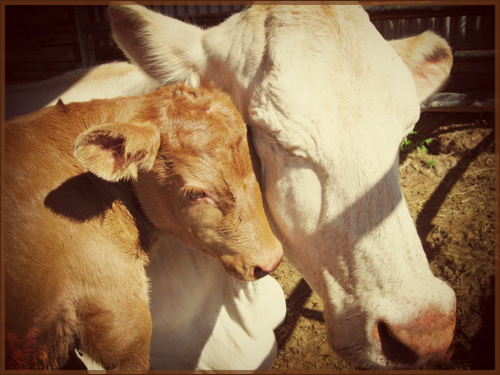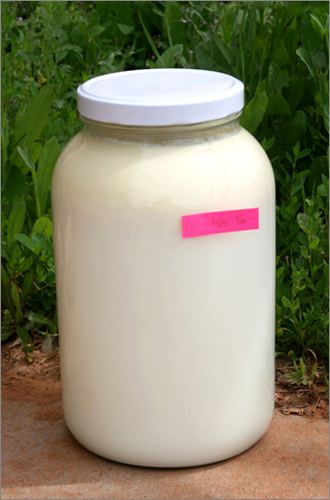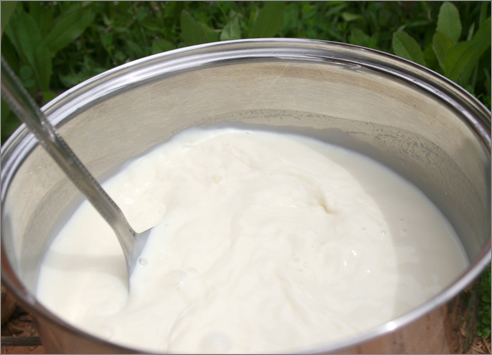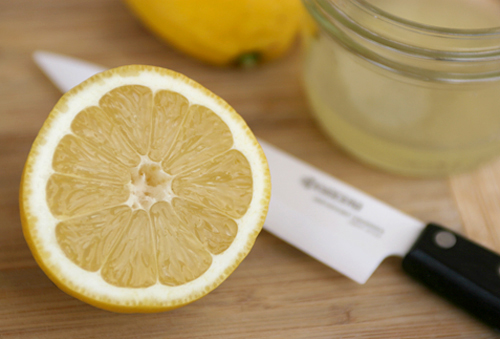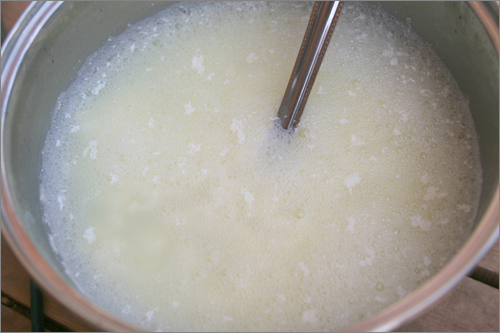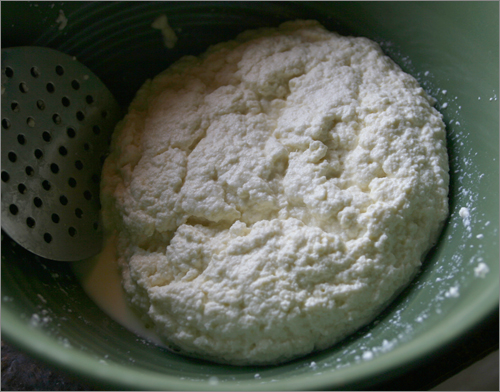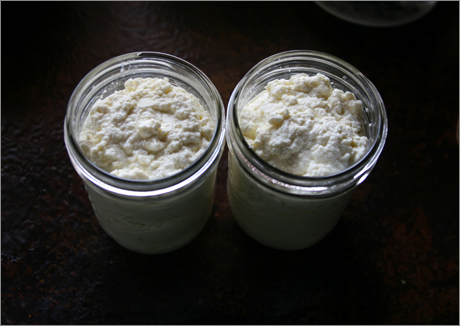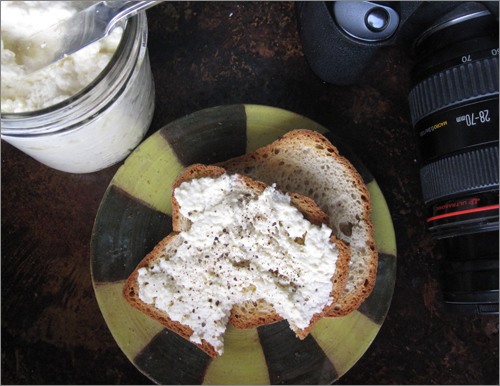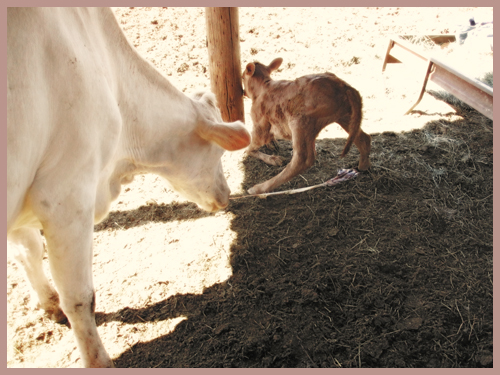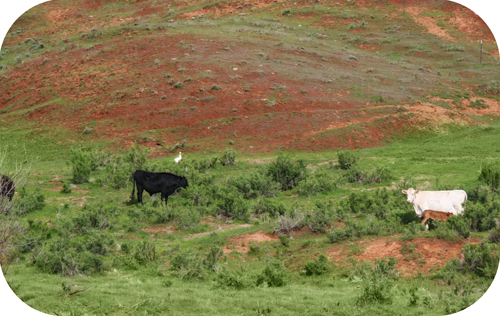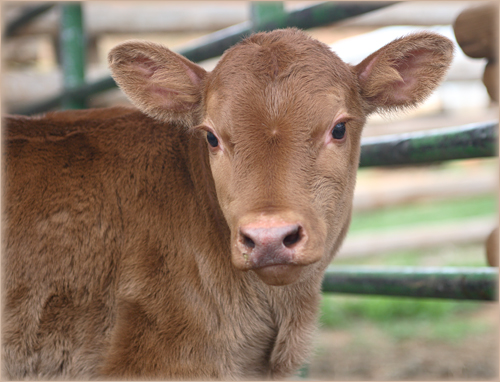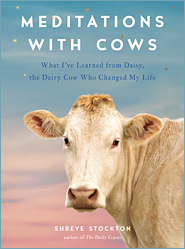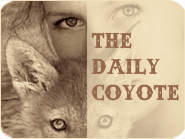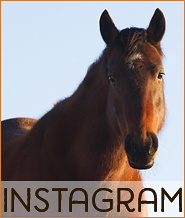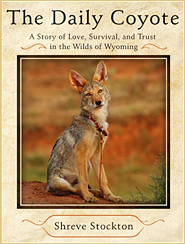Calling for Fiona
Within the first hour of birth ~
Truly Easy Homemade Cheese
Ten years ago, I read a profile in The New Yorker about a cheesemaking nun. I have always remembered the piece, the accompanying photograph (just found it online!), and the profound feeling it left me with: I was like, that’s what I want to be when I grow up.
I’ve now taken the first step down that path. I have made my first cheese.
(I don’t count my previous failures as cheese. They were failures.)
Cheese, on the one hand, is complicated and intimidating. On the other hand, it is simple and intuitive. I’m quite certain that milk wants to become cheese. Through my failures, I have realized the most important part about making good cheese is to take it slow. Respect the milk. DO NOT RUSH THE MILK. And the cheesemaking books never tell you this, at least not the ones I’ve read. And the cheesemaking websites act like you must shell out hundreds of dollars on specialty supplies if you wish to make cheese. Not so. A basic stainless steel pot will do the job just fine, or, in a pinch, a calf’s stomach ~ people have been making cheese for thousands of years, long before fancy accoutrements existed.
Last year, I tried to follow the rules and ended up with so many cheese failures that I had given up. But when I started milking Daisy again last week, and found that familiar surplus overtaking my fridge ~ multiple gallons of milk that we couldn’t possibly drink ~ I decided to try again. I needed something simple and gentle and intuitive to ease me back onto the cheese path. In a case of perfect timing, I was inspired by this post on a blog I enjoy. Since I only had fresh milk on hand, I altered her technique just slightly and the results are incredible.
OK! On to the cheese!
It starts with one gallon of milk.
This is fresh milk from my cow. This particular gallon is the equivalent of whole milk; I placed the pink tab at the cream line in case it didn’t show up in the photo. If you’re using store-bought milk, I think using 2% and maybe even nonfat would be fine, though I’ve not tested it out. You certainly don’t have to start with a gallon. For my first batch I used half a gallon of milk but Mike and I loved the resulting cheese so much I went for a gallon this time.
You will also need a pot and a spoon and a lemon and a thermometer.
That’s it.
I plugged my hot plate into an extension cord and brought it outside because it was a beautiful day and I prefer being outdoors.
Pour the milk into the pot, cover, and set over low to medium-low heat. LOW TO MEDIUM LOW. Stir the milk every now and then; I found that just rocking the pot with the lid on did the job well. Heat the milk to 170-175 degrees Farenheit. This takes a long time at medium low heat; I timed this batch and it took close to an hour. However, do not rush this part. If you do, your cheese will be gummy and flavorless.
Once your milk reaches a temperature of 170-175 degrees, squeeze the juice of a lemon into a cup and slowly pour it into the milk while stirring. When I used a half gallon of milk, I used the juice of half a lemon (about 3 Tablespoons) and with a gallon of milk, I used a whole lemon.
Almost immediately after adding the lemon juice to the milk, it will separate into curds and whey.
At this point, take the pot off the heat and let it sit for a few minutes just to give the curds time to separate from the whey.
Scoop the curds into a bowl; you could also pour through a tight strainer. I just spoon the curds into a bowl and then mash them with the slotted spoon to press out any remaining whey. At this point, you can add salt, herbs, garlic, whatever you fancy. Just mix it in to the curds and taste as you go.
And this is cheese! You could put it in a square of cheese cloth (not the whispy kind; real cheese cloth has a tighter weave, like flour sack cotton) and hang it to drain all the whey for a harder cheese, but I just mash out whatever whey I can, then pack the soft cheese into pint jars. The miniscule amount of remaining whey does not adversely affect the cheese, and I noticed it fully integrates back into the curds and kept it soft and creamy.
One gallon of milk makes two pint jars of cheese. It stores well in the fridge and the consistency is amazing and hard to describe – it’s dense but spreadable and creamy. I like it with a little pink himalayan salt mixed in, spread on toast with fresh ground pepper on top. Try it – and leave a note in the comments telling us how it went! It’s really easy. And REALLY good.
The Birth Story
On Thursday afternoon, I knew Daisy was going to have her baby that night or first thing the next morning. Delicious grass is growing all over the place and usually the cows wander the property, grazing all day long. But on Thursday afternoon, Daisy walked herself down to the corrals and I found her standing in the grassless sheltered section where she had birthed Frisco, looking into the middle distance, in a zone. Frisco and another heifer were down there, too – they follow Daisy wherever she goes – nosing around the empty hay bunk. They wanted to eat; Daisy was not interested in food.
Frisco also obediently follows the red-handled horse brush – he loves to be brushed – and I used this to lure him and the heifer out of the corrals. I locked Daisy in, with a huge pile of hay to eat and straw to nest in, and Frisco, for the first time, had to navigate the wide world on his own (with his heifer friend). He’s been such a mama’s boy his entire life, I wasn’t sure how he would react to the separation, but he’s did a fine job. Became a man, even, as much as a steer can. He and Daisy spent three days apart and Frisco was patient and generous, not at all needy or lonely or whiny. And even now, he spends more time with the heifer and the goose instead of clinging to Daisy. He adores his little sis but seems to understand the current order of things.
I left Daisy by herself, checked on her that evening, and at that point I really believed her baby would be born just after sunrise on Friday morning. When I woke at dawn, I had my usual morning rituals with Charlie and Chloe and the cats and coffee and did a bit of work. I was in no rush to get to the corrals, even though I knew Daisy was having her baby. Daisy prefers to do these things on her own – I could sense that last year, with Frisco’s birth, but bugged her anyway – and this year I decided to let her have the birth the way she wanted it, in peace, like a cow, without me.
And then, one moment, everything shifted gears. I pulled on jeans and boots and was like, “It’s time to go down there!” Right now! And I kind of speed-walked down to the corrals, so curious about what I might find. From afar, I could see Daisy, standing, and then some movement around her legs. At first, I couldn’t tell if it was a barn cat, but with a few more strides down the trail I could see the staccato movements of gangly calf legs. Daisy’s calf was standing but still completely wet – Daisy hadn’t, at that point, cleaned off more than the calf’s face – which means the birth occurred literally less than five minutes before I got down there.
Daisy was attentive to the calf and happy to see me, and soon Ricardo showed up, along with a barn cat.
We all hung out for a timeless spell – an hour? two hours? Daisy birthed her placenta and ate it up, and the curious calf discovered that those things are very slippery.
And this time, when the calf was ready to find a teat, Daisy stood patiently and let her suckle without any drama. I milked Daisy throughout the day, just sitting beside her in the corral as she licked her calf and munched on hay. Frisco came by to say hi, curious and doting, as always, and then wandered off again with his new heifer friend. I kept Daisy and her calf together in the corrals for a few days, and today, a beautiful sunny day, I opened all the gates to let them roam the place. And the bovine family met up (sans Sir Baby who is off doing bull duties) and spent the day grazing together. Frisco front and center, Frisco’s heifer friend to the left at the edge of the frame, Ricardo, the white form just above Frisco, and Daisy nursing her calf:
Now, in regards to her name. That first day, the day of the birth, I could feel the calf’s name in my mouth. I could feel it, but couldn’t figure out what it was. But MJ knew. So many great names were left in the comment section of the “Redhead” post, and one was the name for this particular calf. When I read the name “Fiona,” it fit like a puzzle with what I was feeling in my mouth. And I went down to the corrals and softly called out ‘Fiona,’ and this sweet, gorgeous calf got up from resting in the sun and walked over to me.
Redhead!
Or Strawberry Blond.
Pink?
Toast.
Chestnut?
Fawn?
I honestly don’t know what color this is.
I just know she’s gorgeous.
If you missed the twitter yesterday, Daisy had her baby! It’s a girl!
She’s unnamed, as yet; feel free to leave your suggestions in the comment section. But keep in mind: a dairy cow’s name requires special consideration ~
in addition to sounding nice spoken, it must also be easily hollered across a field to call her in. “Daisy” sounds exactly the same in a speaking voice and when hollered. “Fawn,” for example, would be a sweet name but it’s a very difficult word to holler and the whole sound of the word changes. These are the things you never think about until you have a free-ranging dairy cow!
